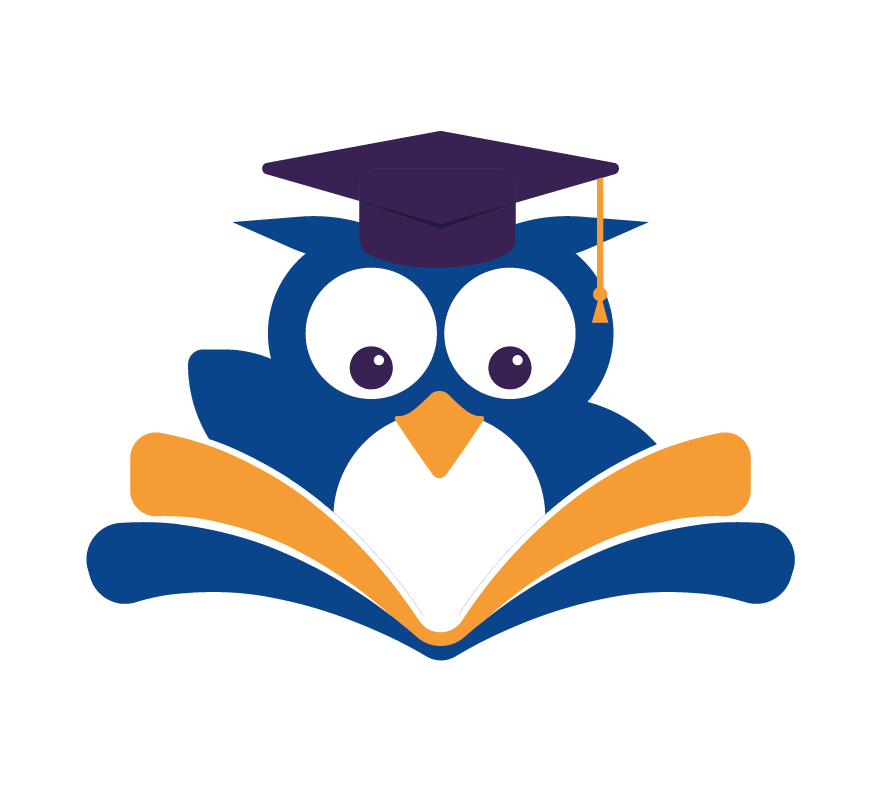Have you ever felt stuck while trying to learn something new? You’re not alone. Many people face obstacles that slow them down, leaving them feeling frustrated and unsure about what to do next.
Learning can be tough, but it doesn’t have to feel lonely or overwhelming. By finding out what’s causing your confusion and using the right strategies, you can beat your toughest learning roadblocks and reach your goals.
This article will show you how to improve your skills and grow more confident in what you can do.
Key Takeaways
- Identify the root causes of your learning roadblocks
- Apply effective strategies to overcome confusion
- Transform your skills and become more confident
- Enhance your learning experience with the right approaches
- Achieve your learning goals with persistence and determination
Understanding Learning Roadblocks
Ever felt like you’re hitting a wall in your learning journey? You try hard but can’t move forward. This is a common experience, often due to learning roadblocks.
Learning roadblocks are obstacles that stop you from learning new things. They can take many forms, like trouble understanding a concept or lacking motivation.
What Defines a Learning Roadblock?
A learning roadblock is any barrier that stops you from learning. It’s not just about not knowing something. It’s about the challenges that make learning that something hard.
Common Causes of Learning Obstacles
Several factors can cause learning obstacles. These include:
- Prior knowledge gaps: Missing foundational knowledge that makes it hard to understand new concepts.
- Learning style mismatches: Teaching methods that don’t align with your learning style.
- Emotional barriers: Fear, anxiety, or lack of confidence that hinders your ability to learn.
Understanding these causes is key to overcoming them.
The Impact of Unaddressed Learning Challenges
If you don’t tackle learning challenges, they can lead to frustration and lower motivation. They can also harm your educational journey. As an educational expert notes, “The skill/knowledge gap in front of you isn’t a roadblock. It’s your opportunity to grow (if you can overcome the intimidation).” This view sees learning challenges as chances for growth, not as insurmountable barriers.
| Cause | Effect | Solution |
|---|---|---|
| Prior Knowledge Gaps | Difficulty understanding new concepts | Review foundational material |
| Learning Style Mismatches | Ineffective learning | Adapt learning techniques to your style |
| Emotional Barriers | Anxiety or fear of learning | Build confidence through small achievements |
Identifying Your Personal Learning Obstacles
Understanding what holds you back in learning is the first step. By knowing your learning roadblocks, you can create plans to beat them.
Self-Assessment Techniques
Self-assessment is key to finding your learning challenges. It helps you see your learning style, strengths, and weaknesses. This way, you can focus on improving where needed.
Questionnaires and Reflection Exercises
Questionnaires and reflection exercises offer deep insights into your learning habits. They make you think about your learning process. This helps you spot patterns that slow you down.
Learning Journals and Progress Tracking
Keeping a learning journal and tracking your progress is very helpful. By reviewing your journal, you can see where you’re struggling. Then, you can change your approach to improve.
Recognizing Patterns in Your Learning Struggles
Spotting patterns in your learning struggles is vital. It helps you develop confidence building techniques. By understanding the causes of your challenges, you can start to conquer challenges that have stopped you before.
Differentiating Between Knowledge Gaps and Learning Blocks
It’s important to know the difference between knowledge gaps and learning blocks. Knowledge gaps are about missing information. Learning blocks are emotional or psychological barriers that stop you from learning well.
The Psychology Behind Learning Difficulties
To boost your confidence in learning, it’s key to understand the psychological factors at play. Learning isn’t just about taking in information. It’s also about how your brain handles that info and your emotional response to challenges.
How Your Brain Processes New Information
Your brain uses a complex network of neurons to process new info. When you learn something new, you’re making new connections between these neurons. This process can be affected by your prior knowledge, emotions, and how the info is presented.
The Role of Emotions in Learning
Emotions are crucial in the learning process. Feeling stressed or anxious can make it tough to focus and learn. But, positive emotions like curiosity and excitement can make learning more enjoyable.
Breaking the Cycle of Learning Frustration
Frustration is a common hurdle in learning. To beat it, you need to find out what’s causing your frustration and come up with strategies to tackle it. This might mean breaking down tough topics into simpler parts, asking for help, or taking breaks to avoid burnout.
| Strategy | Description | Benefit |
|---|---|---|
| Chunking | Breaking down complex information into smaller chunks | Easier to understand and retain |
| Seeking Help | Asking instructors or peers for assistance | Fills knowledge gaps and clarifies doubts |
| Regular Breaks | Taking time off to relax and recharge | Reduces burnout and improves focus |
From Confused to Confident: Solve Your Toughest Learning Roadblock
Turning confusion into confidence is possible with a clear learning plan. This change is key for personal growth and better education. By using the right strategies, you can beat your learning hurdles and reach your goals.
The Transformation Journey Framework
The path from confusion to confidence has several stages. It starts with knowing your current knowledge and where you need to improve. This self-check is vital for making a learning plan that fits your needs.
For example, Sarah, a software engineer, wanted to learn a new programming language. She felt lost at first with all the information. But by breaking her learning into smaller parts and setting goals, she could see her progress.
Setting Realistic Expectations
It’s important to set realistic goals to stay motivated. Learning is a slow process, and progress isn’t always steady. By setting reachable goals, you can celebrate your small victories and stay motivated.
“The greatest glory in living lies not in never falling, but in rising every time we fall.”
Measuring Progress Beyond Traditional Metrics
Progress isn’t just about numbers like test scores or how much you’ve completed. It’s also about how confident you feel and how well you can use what you’ve learned in real life.
Qualitative vs. Quantitative Progress Indicators
Knowing the difference between qualitative and quantitative progress helps you see your learning journey fully. Quantitative measures give you numbers, but qualitative measures show your personal growth and understanding.
| Indicator Type | Examples |
|---|---|
| Quantitative | Test scores, completion rates |
| Qualitative | Confidence levels, application of learned concepts |
Creating Personal Success Benchmarks
Setting personal success benchmarks means making goals that are specific, measurable, achievable, relevant, and time-bound (SMART). This way, you can track your progress and adjust your learning plan as needed.
By using this framework and setting realistic goals, you can turn confusion into confidence. Remember, the journey is as important as the end goal.
Mastering Information Overload
Information overload can make learning hard, but there are ways to beat it. It’s key to have good methods for handling and processing lots of data.
Chunking Complex Information
One good way to deal with too much info is to break it down into smaller, easier pieces. This means splitting big topics into smaller bits. It makes learning and remembering easier.
As “The key to learning is to chunk information into smaller, more manageable pieces”, this method is very important for learning well.
Creating Mental Models for Better Understanding
Creating mental models is another way to understand and organize info. Mental models are like frameworks that link new info to what you already know. They help you remember and use what you’ve learned better.
By making these models, you can learn in a more organized way. It makes complex topics easier to get through.
Tools for Managing Information Effectively
There are many tools to help manage info well. These include:
- Digital organization systems
- Physical note-taking methods
Digital Organization Systems
Digital tools like project management software and note-taking apps help organize info. These systems let you keep your info neat and easy to find. This helps avoid feeling overwhelmed.
Physical Note-Taking Methods
Using notebooks or flashcards for note-taking is a hands-on way to connect with the material. As
“The act of writing down information by hand can significantly improve retention and understanding.”
This approach helps you feel more connected to what you’re learning. It makes learning easier.
By using these strategies, you can handle info overload better. This improves your learning experience.
Defeating Procrastination and Motivation Barriers
To boost confidence and overcome confusion, it’s key to tackle procrastination and motivation head-on. Procrastination is more than just a time issue. It often shows fears, perfectionism, or unclear goals.
Understanding the Root Causes of Procrastination
First, figure out why you procrastinate. Look at your habits and spot patterns. Do you delay tasks because they seem too big or because you don’t know where to start?
Motivation Techniques That Actually Work
Several strategies can boost your motivation. One good method is to set clear, achievable goals. Break big tasks into smaller ones. Then, celebrate your wins.

Building Sustainable Learning Habits
It’s vital to build habits that support your learning. Two helpful techniques are:
- The 5-Minute Rule: Start a task for just 5 minutes. Often, the hardest part is beginning.
- Habit Stacking: Add new habits to ones you already have. For example, review your learning plan after drinking coffee.
The 5-Minute Rule for Getting Started
This simple rule helps you start. By committing to just 5 minutes, tasks seem less scary.
Habit Stacking for Learning Success
Habit stacking uses your current routines to add new ones. It’s a smart way to fit learning into your day without feeling overwhelmed.
By understanding procrastination and using these strategies, you can beat motivation barriers. This will help you make steady progress in your learning journey.
Customizing Strategies for Your Learning Style
Knowing your learning style is key to growing personally and beating learning hurdles. By figuring out if you learn best through seeing, hearing, doing, or reading, you can make your study plan better. This helps a lot in education improvement.
Visual Learning Techniques
Visual learners do well with pictures, diagrams, and videos. Try making mind maps to organize your thoughts and infographics to simplify complex stuff. Watching educational videos and using flashcards can also make learning more fun.
Auditory Learning Approaches
Auditory learners get a lot from listening. Use podcasts and audiobooks as your main study tools. You’ll also learn a lot from talking in discussions and listening to lectures.
Kinesthetic Learning Methods
Kinesthetic learners learn best by doing. Get involved in experiments and projects that let you apply what you’ve learned. This could be anything from science experiments to coding projects, as long as it’s hands-on.
Reading/Writing Enhancement Strategies
Reading and writing learners should focus on note-taking and writing summaries. Making outlines and essays helps solidify your understanding. Reading different texts and keeping a journal also supports your learning.
By using these strategies that fit your learning style, you can beat learning obstacles and grow personally. Try out different methods to see what works best for you.
Leveraging Technology to Overcome Learning Challenges
Technology is a game-changer for those facing learning obstacles. It offers personalized and effective solutions. With digital tools, you can beat your learning roadblocks and reach your goals.
Apps and Platforms for Different Learning Obstacles
Many apps and platforms tackle specific learning challenges. For example, flashcard apps like Anki aid in memorization. Mind mapping tools like MindMeister help organize complex information.
Using AI to Personalize Your Learning Experience
Artificial Intelligence (AI) tailors your learning to your needs. AI-driven platforms analyze your learning patterns. They adapt content to fit your style, helping you conquer challenges more effectively.
Digital Tools for Focus and Concentration
Digital tools like focus-enhancing apps help you stay focused. Apps like Freedom reduce distractions. These tools are key to keeping your concentration and boosting your confidence building techniques.
Building Confidence Through Strategic Small Wins
Focus on small wins to boost your confidence. This method not only builds self-assurance but also prepares you for bigger challenges.
The Science of Confidence Building
Confidence grows when you reach milestones that are hard but possible. This effort releases dopamine, a feel-good hormone that motivates you to learn more. A study shows small wins can boost motivation and confidence by up to 30%.
Creating Achievable Milestones
Break down big goals into smaller tasks. This makes them less overwhelming and lets you see your progress. For example, learning a new language could mean finishing a set number of lessons or having a 10-minute chat with a native speaker.

Celebrating Progress Effectively
Celebrating your wins keeps you motivated. Acknowledging your achievements strengthens the behaviors that led to them. Here’s how to celebrate well:
- Take time to reflect on your progress.
- Share your wins with friends or family for support.
- Treat yourself to something you love.
Recognition Systems That Reinforce Learning
Use a recognition system to improve your learning. This could be a journal of your achievements or an app that tracks your progress. Recognizing your progress reinforces your learning habits.
Avoiding the Perfectionism Trap
While aiming for the best is good, don’t let perfectionism hold you back. Remember, mistakes are part of learning.
“The greatest glory in living lies not in never falling, but in rising every time we fall.” – Nelson Mandela
Adopting this mindset helps you focus on your progress, not perfection.
By focusing on small wins, you can increase your confidence and make big strides in your learning. Celebrate every achievement, no matter how small, and keep moving forward.
Harnessing Social Learning to Overcome Obstacles
Social learning is a great way to tackle obstacles in your studies. By connecting with others who face similar challenges, you gain valuable insights. This can help you conquer challenges and improve your education.
Finding Your Learning Tribe
Finding a community of learners is key. Look for online forums, social media groups, or local study groups. Surrounding yourself with like-minded people can be a big help in overcoming learning obstacles.
“Alone we can do so little; together we can do so much.” – Helen Keller
Effective Peer Learning Techniques
Peer learning means sharing knowledge with others at your level. It includes:
- Pair programming or study pairing
- Group discussions and debates
- Peer review and feedback
When and How to Ask for Help
It’s important to know when to ask for help. Don’t wait until you’re overwhelmed. Ask for help when you’re stuck or need help understanding a concept.
Structuring Questions for Maximum Benefit
When asking for help, make your questions clear. Give context and say what you need help with.
Creating Accountability Partnerships
Creating partnerships can boost your learning. Regular meetings with a partner can keep you motivated and on track.
| Technique | Description | Benefit |
|---|---|---|
| Pair Programming | Working together on coding projects | Improved coding skills |
| Group Discussions | Engaging in topic-related conversations | Deeper understanding of topics |
Maintaining Momentum After Breakthroughs
After you’ve overcome your toughest learning roadblocks, the next step is to keep moving forward. Achieving a breakthrough is a big step in your personal growth journey. But, it’s key to keep the confidence you’ve built.
To keep making progress, it’s important to use strategies that stop you from falling back into old ways. You also need to expand your learning comfort zone.
Preventing Relapse into Old Learning Patterns
One big challenge after a breakthrough is not falling back into old learning habits. To avoid this, keep challenging yourself with new material and confidence building techniques.
Expanding Your Learning Comfort Zone
Expanding your comfort zone means taking on new challenges that push you beyond what you’re used to. This could be learning new subjects or going deeper in areas related to your initial learning roadblock.
| Strategy | Description | Benefit |
|---|---|---|
| Continuous Learning | Engage in ongoing education and training | Enhances personal growth |
| Self-Assessment | Regularly evaluate your progress | Identifies areas for improvement |
| Mentorship | Seek guidance from experienced mentors | Provides valuable insights and support |
Creating a Long-term Learning Development Plan
Creating a long-term plan means setting realistic goals and milestones. This plan should fit your learning style and goals. It should also include strategies for overcoming future learning roadblocks.
Conclusion: Your Journey from Confusion to Mastery
You’ve learned how to beat your toughest learning roadblocks. Now, you’re ready to face challenges that once seemed too hard. By finding the cause of your learning problems and using the right methods, you’re on your way to feeling more confident.
The path from feeling lost to feeling sure of yourself is ongoing. It needs you to keep trying, stay positive, and be open to new learning. By using what you’ve learned, you’ll not only get past confusion but also feel more ready for new challenges.
Every step you take gets you closer to mastering what you’re learning. Keep going on your learning path, and you’ll see how much you can achieve. With the right approach and determination, you can conquer any learning obstacle and reach your highest potential.

